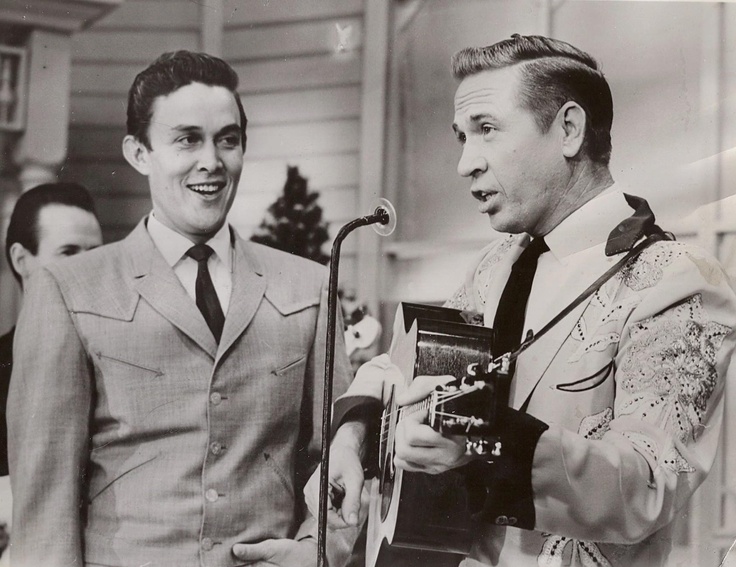
A Rockabilly Reverence: When the Bakersfield Sound Tips Its Hat to a Guitar-Slinging Legend
When Buck Owens, the architect of the Bakersfield sound, took on Chuck Berry’s seminal anthem “Johnny B. Goode,” it wasn’t just a cover—it was a spirited homage, filtered through twang and Telecasters, that bridged the honky-tonk heart of country with the rebellious pulse of early rock ‘n’ roll. Featured on his 1969 album “Tall Dark Stranger”—a record that would produce multiple chart-topping singles—Owens’ version of “Johnny B. Goode” didn’t climb the charts itself, but its inclusion signaled something profound: the acknowledgment of rock’s debt to country and vice versa, sung by one of Nashville’s most defiant outliers.
By 1969, Buck Owens had already defined himself as a singular force in country music. With a string of No. 1 hits and a fiercely independent approach to production and sound, Owens led the charge away from Nashville’s lush orchestration toward something leaner, rougher, more electric—the Bakersfield sound. His choice to include “Johnny B. Goode”, a cornerstone of rock ‘n’ roll penned by Berry in 1958, was both reverent and radical. It wasn’t merely nostalgia or novelty; it was testimony to shared roots—the churning river delta where blues, country, and rhythm collided.
Owens doesn’t so much reinterpret Berry’s tale as reframe it. Where Berry’s original is all jittery exuberance and kinetic swing—a young man bent over his guitar with the world at his fingertips—Owens imbues it with Western grit. The guitars twang with steel-string clarity; the rhythm section pulses like a freight train across the California desert. His voice carries less teenage bravado than seasoned admiration—an elder statesman tipping his Stetson to a fellow trailblazer.
Lyrically, “Johnny B. Goode” is archetypal Americana—a poor boy from Louisiana with talent in his fingers and ambition in his soul. He plays “just like ringin’ a bell,” and in doing so becomes more than just a character; he becomes mythic. Owens preserves this mythos but delivers it through a different cultural lens—not Chicago clubs or East Coast studios, but dusty dance halls and neon-lit honky-tonks.
In choosing to cover this song at that moment in history—a turbulent year rife with generational divides and sonic experimentation—Owens quietly asserted continuity. While the mainstream narrative often split country from rock, rural from urban, tradition from innovation, Owens’ “Johnny B. Goode” said otherwise. It proclaimed that great American music doesn’t live in silos—it converses across styles, generations, and geographies.
There is something deeply moving about hearing Buck Owens take up Chuck Berry’s banner—not to modernize it or make it more palatable for his audience, but to honor it authentically within his own idiom. In that sense, this rendition becomes more than a cover; it becomes an act of musical fellowship—a reminder that the threads binding hillbilly twang to electric rhythm are far stronger than many ever admitted.
And so we listen—not just for Johnny strumming beneath his pine tree—but for the echo of two American voices converging: one black, one white; one Southern-rooted, one California-born; both eternal in their celebration of sound.